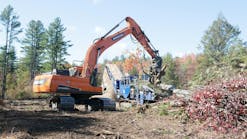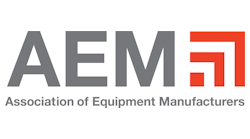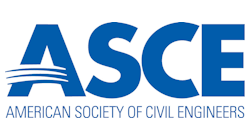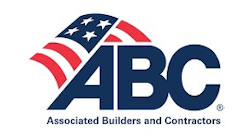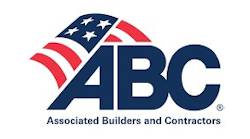A well-written site-specific safety plan (SSSP) is critical to the safe completion of any construction project. OSHA requires an SSSP to ensure that contractors properly train their employees to safely complete the tasks that a project requires. And yet SSSPs are not always done correctly, says Greg Marquez, safety manager, Power Construction Co., Chicago.
Power is a general contractor and typically contracts with a number of subcontractors, who each must submit site-specific safety plans to the company. Common mistakes in subcontractors’ safety plans include vague language, buzz words that mean little or nothing, and recycled plans from another project, says Marquez. What’s more, consultants sometimes sell subcontractors safety plans that cover an all-encompassing checklist, and are not specific to the project at hand. A safety plan may refer to something as “OSHA-certified.” Yet OSHA doesn’t certify anything.
Power Construction surveyed a number of general contractors (GCs) in the Chicago area to find out what they required in SSSPs from subcontractors. Several of the GCs responded that they require the following:
- A fall protection plan
- An equipment crane plan
- A method to manage tiered subcontractors
- Hazard communications
- A job hazard analysis
- Roles and responsibilities in the safety chain of command
- A disciplinary action plan
- An incident response plan
- Training qualifications
- Daily safety huddles
- Methods of procedure for the work
- Housekeeping plan
- Crisis plan
Fall protection plans are very important, but because they are not an issue for most grading and excavation contractors, we’ll be brief about them here. Marquez said that some fall protection plans are not specific enough and some don’t include any fall rescue plan.
When it comes to cranes, Power requires any pick that will use 75% or more of the crane’s capacity be defined as a critical pick. Critical pick procedures are different from non-critical pick procedures. For critical picks, Power has a worksheet to fill out. Load calculations must be worked out. The safety plan must include a rating plan. And a pre-pick meeting is required, which all parties involved must attend. Rigging needs, underground utilities, and overhead power lines must all be taken into account.
Underground contractors often are called upon to use a crane to install StormTrap stormwater detention systems. These structures are basically large precast concrete boxes that must be lifted into place. “Many times excavating contractors have to bring a crane out and make a number of picks to install these StormTrap systems,” says Marquez.
Roles and Responsibilities
The SSSP must identify the personnel who are responsible for the major components of your safety plan. Specific people should be identified to fill the roles of corporate safety representative, project manager, superintendent, emergency contact person, and competent person. “We want roles and responsibilities called out and identified in the Site Specific SafetPlan,” says Marquez.
A back-up person must be identified for the competent person on the job, because one person probably cannot be present at all hours when work is happening. There’s more. “The owner or GC [general contractor] will sometimes require a dedicated safety professional to be present on the job,” says Marquez. He says Power requires competent persons to have completed the OSHA 30-hour training course within the past six years.
If tier subcontractors have contracted with a prime sub, who in turn contracts with the general contractor, those tier subs are still required to comply with the general contractor’s safety policies, says Marquez. “As the general contractor, we want to ensure that the subcontractor has accounted for those tiered subs that they will be bringing on-site,” says Marquez. “We want to make sure that the prime sub has the entire scope of work accounted for.”
Power, like most general contractors, requires subs to have a disciplinary policy—and OSHA wants to see that as well. “We want to see a subcontractor’s disciplinary program because we tell our subcontractors that we have a zero tolerance policy,” says Marquez.
To explain, Power considers that the Site Orientation meeting—which all workers must attend—is a verbal warning that all workers must adhere to the safety requirements of the job. So if a worker is caught violating a safety rule, there is no other verbal warning. Written disciplinary action is begun immediately. “Disciplinary action should be progressive,” says Marquez. “A subcontractor should be prepared to meet the GC’s discipline requirements.
“We want to make sure that a subcontractor coming onto our site has an Incident Response Plan in place,” says Marquez. “That means employees must know what to do in the event of an incident—an employee gets injured, equipment is broken, property damaged, things like that.” If an incident does occur, general contractors typically require witness statements, investigation forms, post-incident meetings, and proof of drug and alcohol testing.
A Site-Specific Safety Plan should contain proof that workers are trained in the tasks they must do on that job. Proof may be required, for example, for such aspects of construction as flagging, trenching and excavation, competent person training, scaffolds, rigging, and more. “We may require proof of training from either the foreman or the rest of the crew in a variety of different tasks if those tasks are part of your scope of work,” says Marquez.
“For an excavator, of course, I’m going to want proof of training in trenching and excavation for at least the foremen, or the competent persons.”
A Job Hazard Analysis is part of the SSSP. These JHAs, as they are called, break the job down into three categories: tasks and steps involved, hazards involved, and safety controls that will be put into place. “A JHA is a step-by-step breakdown of a subcontractor’s entire scope of work from unloading materials to finishes,” says Marquez. Potential hazards need to be identified, along with their corresponding safety controls. The JHA needs to be updated as the work changes and evolves.
Marquez says Power’s subcontractors are required to hold a daily safety huddle and provide written documentation of that huddle by Power’s written form. Many contractors now take the Daily Report form and use it to list the hazards involved for the day and the controls that were implemented.
A Site Specific Safety Plan may require the subcontractor to submit Methods of Procedure, or MOPs. “It is really as simple as it sounds,” says Marquez. “How do you intend to complete this project?”
Each competent person must know what to do in case of an emergency. “Do you have emergency telephone numbers listed?” asks Marquez. “That means not just 911, of course, but the numbers of utilities in case there is a utility strike. Does the sub have a procedure for notification?”

